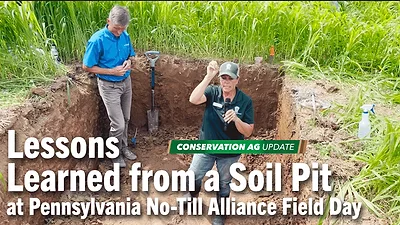Many years ago, an advertisement for an investment firm contained the memorable line, “When E.F. Hutton talks, people listen.”
I thought of that last week after visiting Gordon Wassenaar, who farms about 20 miles east of Des Moines, Iowa. After more than 20 years of no-tilling corn, Wassenaar switched to strip-till for the 2011 growing season.
But he’s not planning to stop there. As we sat in his shop, Wassenaar said he believes cover crops must also be part of his cropping system to protect the soil.
When Wassenaar speaks, I listen, and so do many other people. He’s hosted visitors from 60 to 70 countries on his farm over the years, where he informs them about conservation-tillage systems, the benefits of crop biotechnology and how he and many other farmers use precision technology to manage the application of nutrients and pesticides.
Last spring, the list of visitors included a tour from USDA Secretary Tom Vilsack and U.S. EPA Administrator Lisa Jackson. Wassenaar proudly recounted how he explained to Jackson his procedures for handling pesticides and how he applies them precisely.
Wassenaar believes it’s essential for farmers to take time to show government officials, the media and the public how farmers responsibly, managing natural resources even as they provide an abundant supply of safe, reasonably priced food, fuel and fiber.
Even though he just switched to strip-till, Wassenaar is already focusing on using cover crops. After witnessing an increase in the number and severity of storms battering his state in recent years, he’s convinced they’re essential to minimize erosion and keep nutrients and pesticides out of water bodies.
Corn growers aren’t the only ones considering how cover crops can protect the soil and enhance yields. This issue of Strip-Till Strategies also includes a story on how University of Georgia researchers have evaluated the impact of cover crops on yields of cotton in strip-till and conventional tillage.





